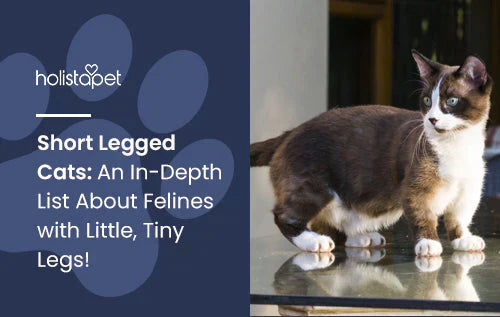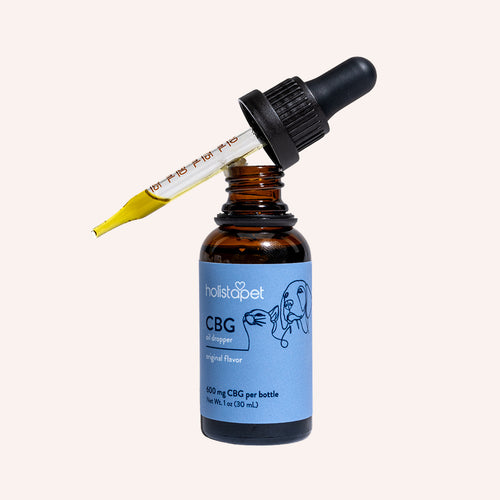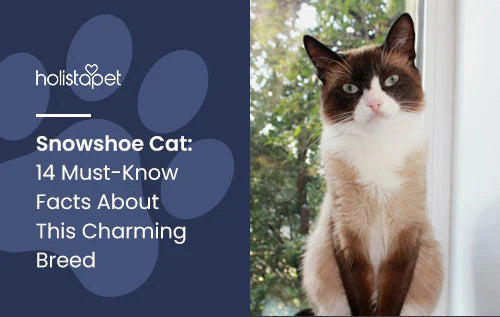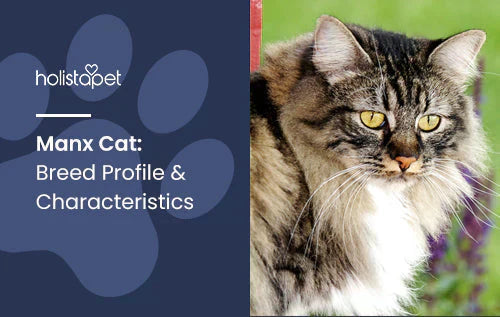So you've been browsing Instagram, Facebook, or your favorite news blog, and you stumble upon something unbelievably...cute. These small, adorable creatures seem almost too perfect to be real. With their distinctive short legs and compact bodies, these short legged cats capture the hearts of cat lovers everywhere. Whether you're already familiar with them or just discovering them for the first time, there's something irresistibly charming about these pint-sized furballs that make them a favorite among pet enthusiasts worldwide.
Can Cats Have Short Legs?
Absolutely! But why does my cat have short legs? They're not the product of some photoshop magic; short-legged cats are real, and they're not kittens - they're actually full-grown felines! This means that short-legged cats will actually stay this cute! Nowadays, there are several lovable that are naturally born with short legs, but they all can be attributed to a single cat breed: the Munchkin cat and what cats have short legs?
History of Short Legged Cats
Short-legged cats have been around as early as the 1940s. The first officially documented case was in 1944 when a British veterinary report took a special interest in four generations of short-legged cats. The report noted that they were pretty similar to normal cats, except for their short legs.
However, the line of documentation was lost during World War II; nevertheless, we can presume that this adorable breed lived on. During this time, there were rumored sightings of short-legged cats in Russia in 1956 and in the United States in the 1970s. The breed didn't officially emerge again until 1983, when Sandra Hochenedel, a music teacher in Louisiana, found two pregnant cats hiding under a truck.
She ended up keeping one of the cats and named her Blackberry. But when Blackberry had her litter, she was pleasantly surprised to find that half of the kittens were born with...yup, short legs! Sandra gave a short-legged male kitten to her friend, Kay LaFrance, and the rest is history - the Munchkin cat breed was born!
The breed was first introduced to the public in 1991, but it wasn't until 1994 that it was officially recognized as a breed by The International Cat Association (TICA). Although the Munchkin cat is a relatively new breed, it didn't take any time to capture the hearts of cat lovers everywhere around the world.

Can Short Legged Cats Jump?
Yes, those little leggies can jump! Maybe not quite as high as other cats, but there is some spring in their step. Munchkin cats, for instance, might not reach the top of a bookshelf in a single leap, but they can easily jump onto lower surfaces like couches or chairs. Their short legs do not significantly hinder their ability to run or play, allowing them to chase after toys and explore their surroundings with the same enthusiasm as any other cat.
Are There Health Concerns for Short-Legged Cats?
Because the breed has only been around a few decades, the health implications of short legs are inconclusive. There was speculation that Munchkin cats would have spine problems (like other short-legged dogs), but so far, there hasn't been any indication of that. In fact, x-rays of older Munchkin cats revealed no sign of joint, bone, or spinal problems. However, you should be aware that the short legs are a result of a genetic mutation called achondroplasia. This mutation causes dwarfism, which has some health conditions associated with it, including:
- Lordosis: abnormal curvature of the spine
- Pectus excavatum: a chest deformity that results in a hollowed chest
Additionally, because Munchkin cats tend to have decreased activity because of their short legs, they sometimes develop osteoarthritis, which results in joint pain and stiffness. But as long as you encourage activity in your cat, they should be fine!
List of Cat Breeds with Short Legs
What cat has short legs? Short-legged cats have become increasingly popular among cat lovers, thanks to their unique appearance and charming personalities. These breeds, characterized by their distinctive short legs, have captured the attention of pet enthusiasts and have even been recognized by many pedigree cat associations. Below, we've compiled a list of the best known feline breeds of short-legged cats, each with its own unique traits and characteristics:
Munchkin Cat
You have to respect the original, the mother of all other short-legged cats...the one and only Munchkin cat! They are small to medium cats that weigh between 4 and 9 pounds. They're known for being friendly to people and intelligent. They come in a variety of coats and colors - ranging from short to medium-long hair, plush coat to silky, and a bunch of different colors and patterns.
The defining characteristic of Munchkin cats is obviously their adorable short legs. This gives them an elongated appearance, which led people to also call them "sausage cats" (they're the cat equivalent of the "wiener dog"). They're also quicker than you think; the short legs bring them closer to the ground, making them surprisingly agile around corners! The hind legs of a Munchkin cat are actually a bit taller than their front legs, which results in a slight rise in their torso. Also, their legs can be slightly bowed, which just adds to their cuteness.

Skookum Cat
With a playful and confident personality, cute little legs, and a curly coat, the Skookum cat is also referred to as the Shirley Temple of cats. They are a cross between a Munchkin cat and a LaPerm cat - a breed famous for its intelligence and charming curly hair.
Traits from both breeds can be clearly seen in the Skookum cat. They are perfectly pocket-sized and typically weigh only 3 to 7 pounds. Their coat has the clearly identifiable curls of the LaPerm and a light and airy texture that's soft to the touch. However, it's their tail that really stands out; it's puffy and has the look of a lush and luxurious duster.
Napoleon Cat
The short and regal Napoleon cat (named appropriately after Napoleon Bonaparte) was first developed in 1996 as a cross between a Munchkin and a Persian cat. This gives them the adorable short stature of Munchkins combined with the lovable iconic look of Persian cats – a bunch almost everyone loves!
However, they do not have the flat nose of Persian cats, which can be a good thing because they avoid the accompanying respiratory problems. Napoleon cats, also known as Minuet cats, have playful and active personalities and enjoy spending time with humans. This makes them particularly good cats for families with children.
Minskin Cat
With round eyes, large alien-like ears, and an irregular coat, the Minskin cat may not even look like a cat at all (E.T. anyone?). But it is! A Minskin cat is a cross between a Munchkin and , with a touch of Devon Rex and Burmese. It has the short stature of a Munchkin cat, but other than that, the Minskin is completely unique.
Most notably, their coat is made up of different lengths fur. The fur is generally sparse all around, but it gathers at denser "fur-points" around the mask (face), ears, legs, and tail. This gives their coat an inconsistent look. Also, its tail is actually longer than its body, which adds to their out-of-this-world look. Despite their strange look, Minskin cats have a sweet and friendly personality, require little grooming, and are generally healthy.

Dwelf Cat
The Dwelf cat is another otherworldly looking short-legged cat that exhibits attributes of a dwarf and an elf - hence the name "Dwelf." They are a cross of a Munchkin, American Curl, and Sphynx, making a cat with short stature (like a dwarf), curled ears (like an elf), and the hairless body of a Sphynx cat. The Dwelf cat is very small (weighing an average of 4 pounds) and is actually not completely hairless.
They have very thin, short hair, similar to peach fuzz. Also, if you're interested in a Dwelf cat, be aware that they could have some skeletal problems; so, it's a good idea to get one from a reputable breeder who screens for health issues in the parents. They're not only known to have a unique look and cute stature! Dwelf cats also have very playful personalities - almost like dogs! This makes them a great choice for young couples or families with children.
Are Short Legged Cats Recognized by the International Cat Association?
Yes, short legged cats, particularly the Munchkin breed, are recognized by the International Cat Association (TICA). In 1994, TICA officially accepted the Munchkin cat as a new breed, despite some controversy within the cat breeding community. The breed's recognition marked a significant milestone, as TICA is one of the few pedigree cat associations that acknowledges the Munchkin and other short legged cat breeds.
This recognition allows these cats to compete in cat shows and be registered under TICA, further legitimizing their status as a distinctive and recognized feline breed. TICA's acceptance has also paved the way for the development of other short legged cat breeds, such as the Bambino and Dwelf, under various breed development programs. However, it's important to note that not all pedigree cat associations recognize short legged cats due to concerns about the health risks associated with their genetic mutation causing their distinctive short legs.
How to Care for a Short Legged Cat Breed
Caring for a short legged cat breed requires attention to their unique physical needs and regular veterinary checkups to ensure their overall health. These cats, known for their distinctive short legs, need a few unique considerations from other breeds to keep them happy and healthy.
Regular Veterinary Checkups
Regular veterinary checkups are essential for short legged cats to monitor their overall health and address any potential health issues early on. Due to their unique body structure, these cats are more prone to joint diseases, spinal problems, and mobility issues, making frequent visits to the vet crucial for maintaining their quality of life.

Diet and Weight Management
Maintaining a healthy weight is particularly important for short legged cats to avoid putting additional strain on their shorter limbs and spine. A balanced diet, portion control, and regular exercise can help prevent obesity, which could exacerbate any existing mobility issues or lead to chronic pain.
Mobility and Exercise
Despite their shorter limbs, short legged cats enjoy playtime and need regular exercise to stay fit. Providing them with toys, low-height cat trees, and accessible spaces for exploration can help keep them active without overexerting their joints or hind legs.
Grooming Needs
Short legged cats may require more frequent grooming, especially if they have long or curly coats. Regular brushing helps prevent matting and reduces the risk of skin problems, while also giving you a chance to check for any signs of health issues that might be developing under their dense fur.
Comfortable Living Environment
Creating a comfortable living environment tailored to the needs of short legged cats is crucial for their well-being. Ensure that furniture, litter boxes, and feeding stations are easily accessible, minimizing the need for jumping or climbing, which could be challenging due to their short legs.
Monitoring for Health Problems
Owners should be vigilant for signs of health problems, such as difficulty moving, changes in behavior, or reluctance to jump or play. Early detection and treatment of issues like spinal problems or joint diseases can prevent them from becoming more serious, ensuring that your furry friend remains healthy and happy.
Do Short Legged Cats Have Health Risks?
Short legged cats, such as the Munchkin breed, are generally healthy but do come with certain health risks associated with their unique body structure. While these cats can lead full, happy lives, it's important for cat owners to be aware of these potential issues to provide the best possible care for their furry friends.

- Spinal Problems: Short legged cats are at a higher risk for spinal issues due to their curved spine. This can lead to conditions like lordosis, where the spine dips inward, potentially causing discomfort or pain.
- Joint Diseases: The shortened limbs of these cats can put extra stress on their joints, increasing the likelihood of developing joint diseases such as osteoarthritis. Regular monitoring and maintaining a healthy weight can help mitigate these risks.
- Mobility Issues: While short legged cats can still jump and run, their shorter limbs may limit their mobility over time, especially as they age. This can lead to difficulties in performing activities that are easy for other cats, such as climbing or jumping onto high surfaces.
- Obesity: Due to their limited ability to exercise compared to cats with longer legs, short legged cats are more prone to obesity. Excess weight can exacerbate existing joint and spinal issues, so maintaining a balanced diet is crucial.
- Breathing Problems: In some cases, short legged cats, especially those with other physical traits like a flattened face, may experience breathing difficulties. This is often due to the combined effects of their short legs and other congenital features, requiring careful monitoring and possibly special care.
Final Thoughts - Short Legged Cats
It's not movie magic or digital editing - short-legged cats are very much real! They started with the Munchkin breed, but since then, many breeds with adorable, tiny legs have been introduced. Although each breed has its own distinct look and personality, they're all friendly, playful, and great family pets. On top of all that, they're small, fast, and their paws go pitter-patter as they run...honestly, what's not to love?


 CBD Oil for Cats - Fast Acting
CBD Oil for Cats - Fast Acting
 CBD Cat Treats - Easy Dose
CBD Cat Treats - Easy Dose
 CBD Calming Chews for Cats - Highly Rated
CBD Calming Chews for Cats - Highly Rated
 CBG Oil for Dogs and Cats - Loved by Thousands
CBG Oil for Dogs and Cats - Loved by Thousands





Leave a comment
All comments are moderated before being published.
This site is protected by hCaptcha and the hCaptcha Privacy Policy and Terms of Service apply.